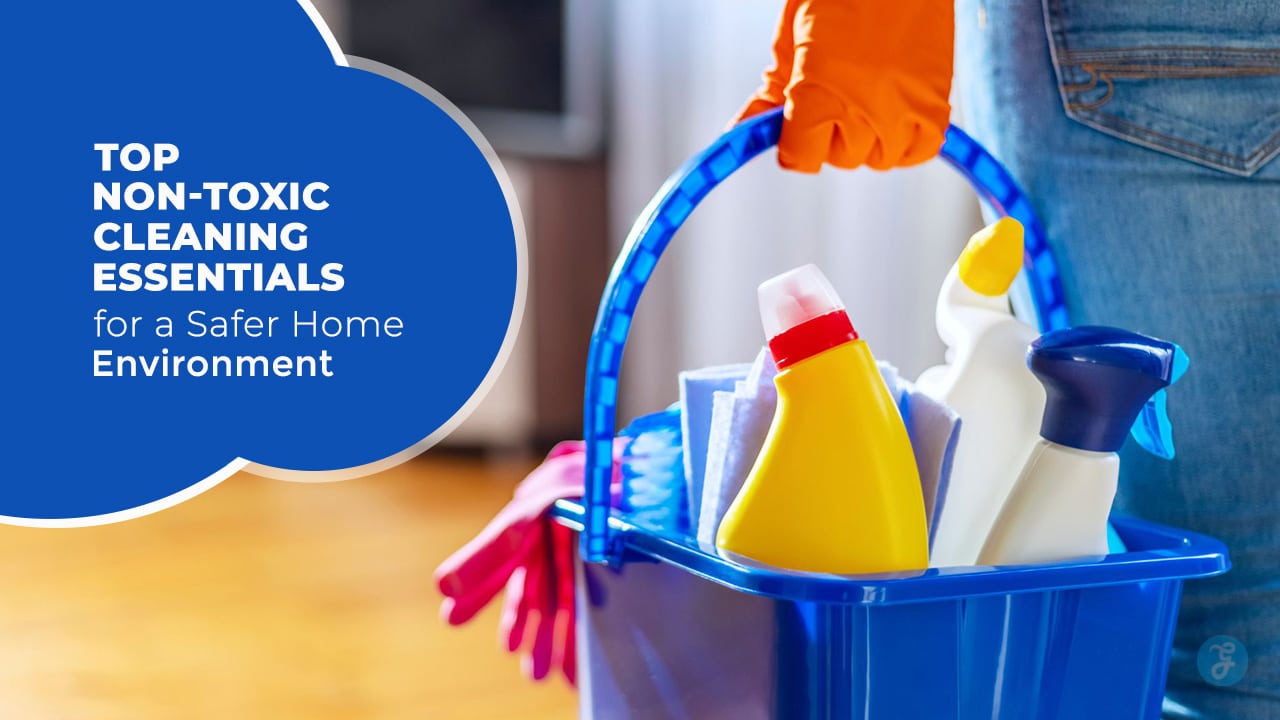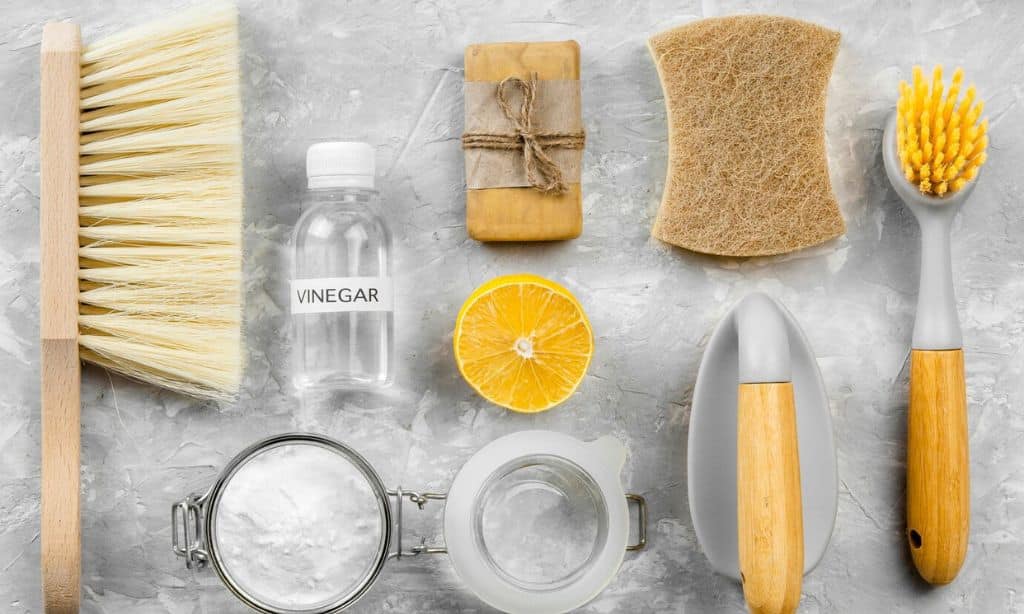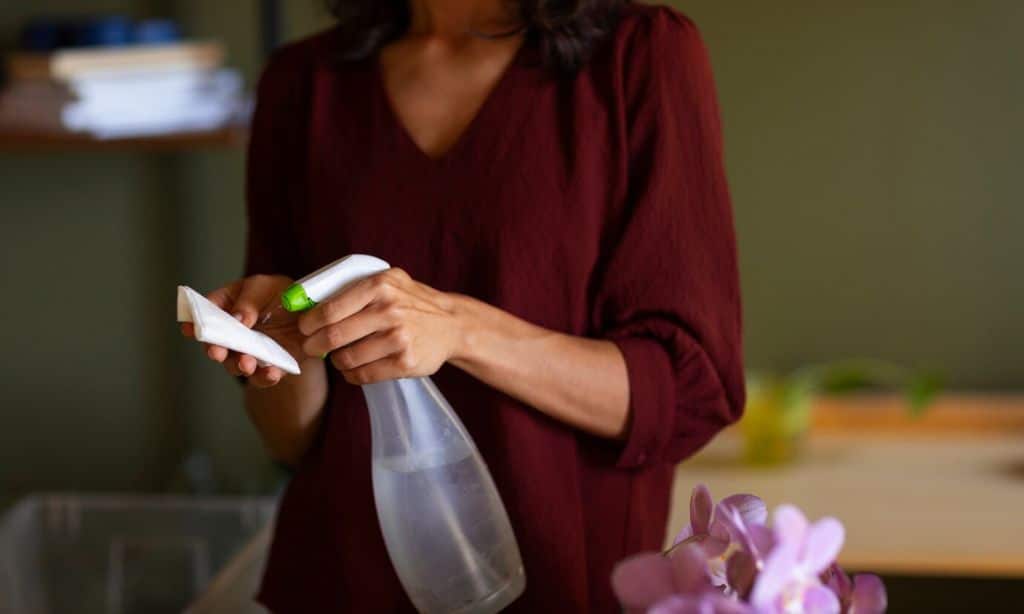Creating a clean and healthy home environment starts with the products you use every day. Traditional cleaning products often contain harsh chemicals that can harm your health, the environment, and even your household surfaces over time.
Embracing Non-Toxic Cleaning Essentials for a Safer Home not only reduces exposure to harmful substances but also promotes sustainability. This guide explores the top non-toxic cleaning products and how they can transform your cleaning routine.
Why Choose Non-Toxic Cleaning Products?
Health Benefits
Switching to non-toxic cleaning products significantly reduces exposure to harmful chemicals like ammonia, bleach, and phthalates. These substances are common in conventional cleaners and have been linked to respiratory issues, skin irritation, and long-term health risks. Non-toxic alternatives are free from these hazards, making them safer for everyone, especially children and pets.
Environmental Impact
Many traditional cleaning products release volatile organic compounds (VOCs) into the air and contribute to water pollution. In contrast, non-toxic cleaners use biodegradable ingredients that break down naturally, reducing their environmental footprint. By using eco-friendly products, you help protect waterways and reduce air pollution.
Cost Efficiency
While some eco-friendly products might have a higher upfront cost, they often come in concentrated formulas that last longer. DIY solutions using non-toxic staples like baking soda and vinegar are also budget-friendly and highly effective.
The Top 10 Non-Toxic Cleaning Essentials
1. Baking Soda
Baking soda is a versatile, natural deodorizer and gentle abrasive that’s safe for various surfaces. Its alkaline nature makes it effective at cutting through grease and neutralizing odors. Whether you’re scrubbing kitchen counters or freshening up carpets, baking soda is a must-have in your cleaning arsenal.
Uses:
- Scrubbing sinks, tubs, and countertops.
- Removing tough stains from clothes and surfaces.
- Neutralizing odors in refrigerators and garbage bins.
| Cleaning Task | Baking Soda Solution |
| Scrubbing sinks and tubs | Mix with water to form a paste |
| Deodorizing carpets | Sprinkle, let sit, and vacuum after 15 min |
| Removing stubborn stains | Combine with vinegar for extra power |
Example: Sprinkle baking soda on a damp sponge to clean tough grease stains on stovetops without scratching the surface.
2. White Vinegar
White vinegar is a powerful disinfectant and stain remover. Its acetic acid content cuts through grime, limescale, and odors. Non-toxic and biodegradable, white vinegar is perfect for everyday cleaning tasks.
Uses:
- Cleaning windows and mirrors for a streak-free shine.
- Removing limescale from kettles and faucets.
- Deodorizing garbage disposals and drains.
| Cleaning Task | Vinegar Solution |
| Cleaning windows | Mix equal parts vinegar and water |
| Descaling kettles | Boil with equal parts vinegar and water |
| Deodorizing drains | Pour down followed by baking soda |
Example: Use a vinegar and water mixture to wipe down stainless steel appliances, leaving them gleaming without harsh chemicals.
3. Castile Soap
Castile soap is a plant-based, biodegradable soap ideal for all-purpose cleaning. Free from synthetic detergents and animal products, it’s gentle yet effective on dirt and grease. Its versatility makes it a go-to choice for various cleaning tasks.
Uses:
- Dishwashing and handwashing.
- Cleaning floors, walls, and countertops.
- Washing fruits and vegetables.
| Cleaning Task | Castile Soap Solution |
| Mopping floors | 2 tbsp in a bucket of warm water |
| Dishwashing | A few drops in warm water |
| Washing fruits and veggies | Mix with water for a safe rinse |
Example: Dilute castile soap with water to create a gentle, effective all-purpose cleaner for your home.
4. Lemon Juice
Lemon juice is a natural disinfectant with antibacterial properties and a fresh citrus scent. Its acidic nature cuts through grease and removes stains, making it a powerful addition to your cleaning toolkit.
Uses:
- Polishing brass and copper.
- Removing grease stains from countertops.
- Deodorizing cutting boards and microwaves.
| Cleaning Task | Lemon Juice Solution |
| Polishing brass | Mix with salt to create a paste |
| Cleaning cutting boards | Rub with half a lemon and salt |
| Deodorizing microwaves | Heat lemon water for 5 minutes |
Example: Cut a lemon in half and use it to scrub hard water stains on faucets, leaving them sparkling clean.
5. Hydrogen Peroxide
Hydrogen peroxide is a safe and effective bleaching agent that doubles as a disinfectant. It’s particularly useful for sanitizing surfaces and whitening fabrics without the harshness of chlorine bleach.
Uses:
- Sanitizing countertops and cutting boards.
- Whitening laundry and removing stains.
- Cleaning grout and tiles.
| Cleaning Task | Hydrogen Peroxide Solution |
| Sanitizing countertops | Spray directly, let sit, and wipe |
| Whitening laundry | Add 1 cup to your wash cycle |
| Cleaning grout | Apply and scrub with a toothbrush |
Example: Use hydrogen peroxide to disinfect doorknobs and light switches, keeping high-touch areas germ-free.
6. Essential Oils (e.g., Tea Tree, Lemon, Lavender)
Essential oils not only add a pleasant fragrance to your cleaning routine but also possess antibacterial and antifungal properties. They’re a great way to enhance DIY cleaners naturally.
Uses:
- Freshening up rooms and fabrics.
- Adding antibacterial properties to homemade cleaners.
- Repelling pests like ants and mosquitoes.
| Cleaning Task | Essential Oil Solution |
| Air freshener | Add 10 drops to a spray bottle with water |
| Surface cleaner | Combine with vinegar and water |
| Pest repellent | Use tea tree oil around entry points |
Example: Add a few drops of lavender oil to a vinegar cleaning solution for a calming scent.
7. Microfiber Cloths
Microfiber cloths offer a reusable, chemical-free solution for dusting and cleaning. Their unique fibers trap dirt and dust, making them highly effective even with just water.
Uses:
- Cleaning glass and mirrors without streaks.
- Dusting furniture and electronics.
- Mopping up spills quickly and efficiently.
| Cleaning Task | Microfiber Cloth Usage |
| Dusting electronics | Use dry to avoid static |
| Cleaning glass | Dampened with water for streak-free shine |
| Absorbing spills | Use dry or dampened for quick cleanup |
Example: Use a damp microfiber cloth to clean windows for a streak-free finish, reducing waste from paper towels.
8. Plant-Based Dish Soap
Plant-based dish soaps are free of synthetic fragrances and harsh chemicals, making them gentle on your hands and the environment. They’re effective at cutting through grease while being safe for septic systems.
Uses:
- Washing dishes and utensils.
- Cleaning greasy kitchen surfaces.
- Pre-treating laundry stains.
| Cleaning Task | Dish Soap Solution |
| Washing dishes | A few drops in warm water |
| Degreasing surfaces | Apply directly and wipe with a damp cloth |
| Treating laundry stains | Apply directly before washing |
Example: Use plant-based dish soap to remove greasy fingerprints from kitchen cabinets effectively.
9. Natural Laundry Detergent
Free from synthetic fragrances, dyes, and harsh chemicals, natural laundry detergents are gentle on fabrics and skin. They clean effectively while being safe for sensitive skin and septic systems.
Uses:
- Washing clothes and linens.
- Pre-treating tough stains.
- Maintaining fabric quality over time.
| Cleaning Task | Laundry Detergent Solution |
| General laundry | Use as per product instructions |
| Pre-treating stains | Apply directly to stained area |
| Washing delicate fabrics | Use mild formulas for gentler cleaning |
Example: A natural detergent with essential oils can leave clothes both clean and lightly scented without synthetic additives.
10. Natural All-Purpose Cleaner
A natural all-purpose cleaner is a convenient, ready-to-use solution designed for multiple cleaning tasks. These cleaners are typically made from plant-based ingredients and are free from harmful chemicals, making them safe for use around children and pets. They can handle everything from kitchen messes to bathroom grime.
Uses:
- Cleaning countertops, tables, and furniture.
- Wiping down bathroom surfaces like sinks and tiles.
- Spot-cleaning walls and appliances.
| Cleaning Task | All-Purpose Cleaner Usage |
| Kitchen surfaces | Spray directly and wipe with a cloth |
| Bathroom cleaning | Apply to tiles and scrub with a sponge |
| Spot-cleaning walls | Spray and gently wipe with a damp cloth |
Example: Use a natural all-purpose cleaner with a citrus scent to keep your home smelling fresh while maintaining cleanliness.
How to Transition to Non-Toxic Cleaning Essentials
Start Small
- Replace one conventional cleaner at a time to ease the transition.
- Focus on high-use items like dish soap or all-purpose cleaner first.
DIY Cleaning Solutions
- Create your own cleaners using ingredients like baking soda, vinegar, and essential oils.
- Experiment with recipes to find what works best for your household needs.
Look for Certifications
- Identify products labeled with certifications like “EPA Safer Choice” or “EcoCert.”
- These labels ensure products meet strict environmental and health standards.
Takeaway
Switching to Non-Toxic Cleaning Essentials for a Safer Home is an investment in your family’s health and the environment. By incorporating these top cleaning essentials into your routine, you can maintain a sparkling clean home without compromising safety or sustainability.
Start small, experiment with DIY solutions, and choose certified products to make the transition seamless. For more tips on sustainable living, visit Editorialge.











































